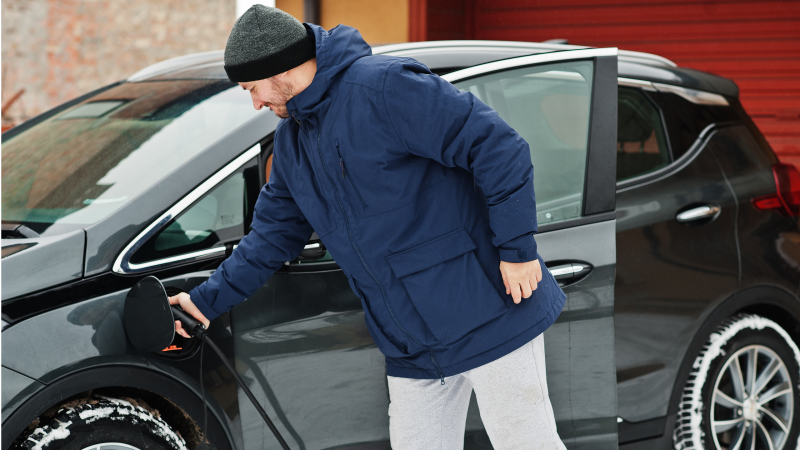Tips for maximizing EV performance in winter

All vehicles are affected by cold temperatures. Windshield wiper fluid and blades don’t work as well. The air pressure in your tires is likely to be low, and the oil in your engine is likely to be thicker and more sluggish. Plus, batteries are more likely to die in extreme temps.
But what about electric vehicles (EVs), which run entirely on batteries? Let’s break down how EVs are impacted by cold weather — and what EV drivers can do to maximize their range.
Preserving fuel economy in cold weather
When it’s 20 degrees Fahrenheit outside, fuel economy is significantly decreased for all types of cars – but especially for EVs.fuel-economy-in-cold-weather
- Gas-powered cars: 15-24% drop in gas mileage
- Hybrids: 30-34% drop in gas mileage
- EVs: 39-41% drop in electric range
But that’s not the end of the story. About two-thirds of the loss in EV driving range is due to the energy used to heat the cabin, and much of that can be alleviated by taking two actions:cold-temp-affect-ev-driving-range
- Pre-heating the car while it is still plugged into its charger and you’re still warm indoors – something many phone apps can initiate remotely. This pulls energy from the outlet, not the EV’s battery
- Turning on heated seats and heated steering wheels is more energy efficient than using cabin heaters and will get passengers warmer, faster
Cold EV science
Just like the lithium-ion batteries that power cell phones and laptops, the lithium-ion batteries that power most EVs are sensitive to temperature extremes – specifically, below 20 degrees and above 95 degrees Fahrenheit. Cold temps, in particular, slow down the chemical reactions in battery cells, which affects overall EV range.
But the slow-down in chemical reactions isn’t the primary reason why EVs lose range in cold weather; it’s the added power demands of winter driving, which include:
- Heating – Again, running cabin heaters uses a lot of power compared to an internal combustion engine that generates its own heat
- Window Defoggers – Breathing and exhaling in colder temps creates condensation on the glass, requiring use of electric defoggers
- Lights – Longer winter nights means greater use of headlights
- Snow and Slush – Driving through thick precipitation increases resistance and therefore requires more energy
Simply put, the more power is going to other parts of the car, the less power is going to the motor – that’s why EV range decreases in winter.
One way EVs might perform better-than-expected in winter weather: handling. Because EV batteries are usually heavy and located under the floor, EVs generally have a lower center of gravity than gas-powered cars and that added weight can result in better handling in poor weather conditions.
What advice should EV drivers follow in winter?
Some experts recommend only buying EVs with a range that’s double your daily driving needs, just in case the expected range does drop by 40% during colder weather. But it is possible to maximize an EV’s driving range in colder weather by considering options such as:
- Parking the car in a garage – This will keep the car a little warmer at all times, decreasing the energy required to warm it up
- Pre-heating the car while it is still charging – This will pull energy from the outlet, rather than from the EV’s battery
- Using seat warmers instead of cabin heaters – It uses less energy and gets passengers warmer, quicker
- Keeping up tire pressure – As with all cars in all weather, fuel economy is optimized when tire pressure is correct
The long and short of it is this: EVs are affected by cold weather, just like all other driving technologies, but a little advance planning should alleviate most range anxiety.
To learn more about EVs, visit www.Chase.com/EV.



